A History of the New Venture Theatre
by Alex Epps
OUR BUILDING
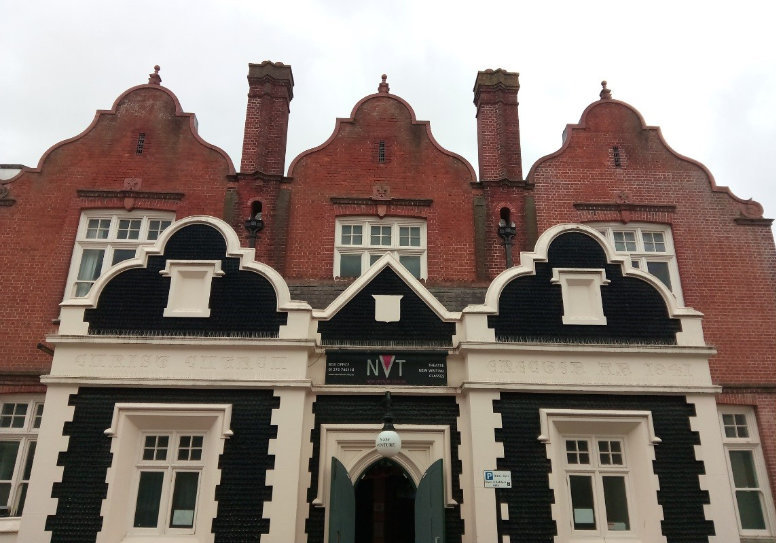
New Venture Theatre currently resides in what used to be Christ Church School.
The school was built in 1841 by the Rev. James Vaughan to “provide day and Sunday school education, at a reasonable cost, to the children of tradesman and artisans”. The Rev. Vaughan, an important figure for many years in Brighton’s church community, had often been quoted stating that “the education of the rich and the poor would be adequately provided for but for those who were neither rich nor poor, it would be needful to provide sufficient help to enable themselves in securing for their children an education adequate to meet the demands that would be made upon them”.
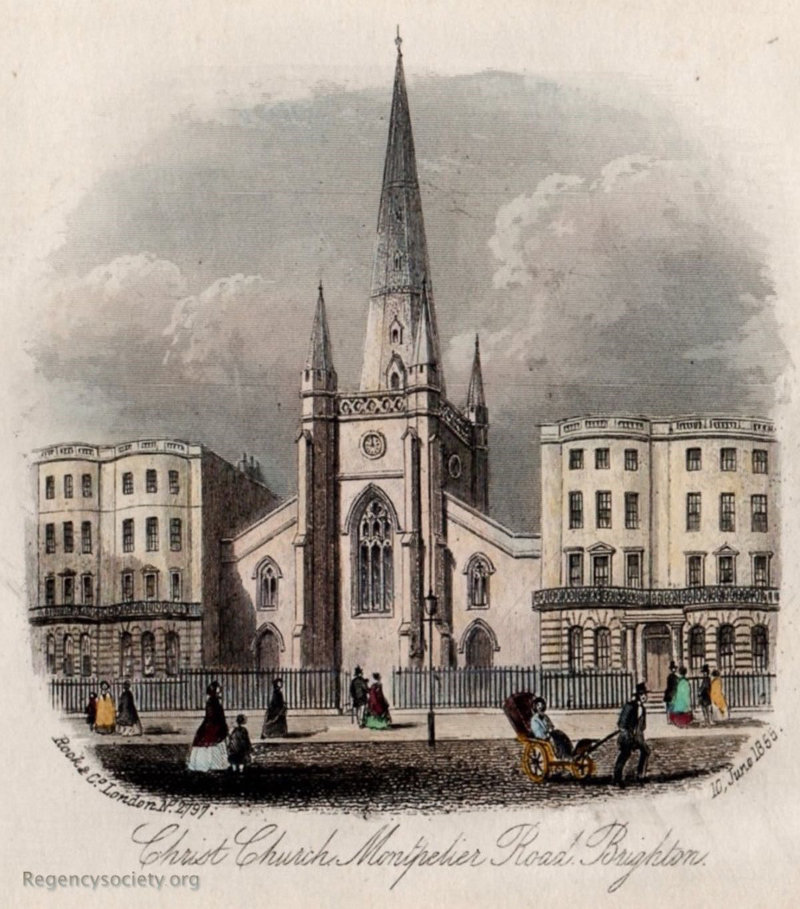
The school was attached to Christ Church situated in Montpelier Road (just south of the Western Road Junction). The Church had been built in 1838, and it was known for its tall spire which supposedly rivalled that of Chichester Cathedral.
In 1891, plans were submitted to the town council to add an additional storey to the existing school building, giving increased and better accommodation for a larger number of male pupils whilst the ground floor would be modified and improved for female pupils. The cost of the expansion was estimated at £2,000 but this sum was quickly raised, and work began.
The school re-opened in 1894 and for the first time had electricity and hot water. The upstairs had been divided into 4 classrooms for the boys, some of which contained museum display cases containing collections of fossils, shells and minerals. Meanwhile, the girls’ quarters downstairs had been divided into a classroom cum kitchen, with a scullery. Len Goldman, our oldest NVT member, attended the school in the 1920s and has written extensively about his experiences in his book ‘Oh What a Lovely Shore”.
The school shut down in 1948, while the interior of the church was destroyed in an arson attack in 1978, and then completely demolished in 1982.
OUR COMPANY
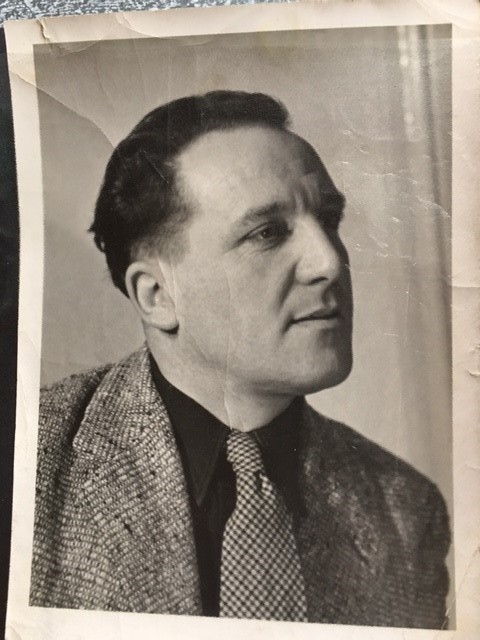
This is our founder, Arthur Graham Phillips, although he was known to everybody as Graham.
He was born in 1912, and was quickly consumed with a passion for theatre. He trained as an actor in the early 1930s but gained more renown as a writer of one act plays and a producer.
By 1935, (although this is stated as early as 1929 in other accounts) , he had formed the Gradonic Theatre Club. The club was based at the Attic Theatre in Shaftesbury Road, Hove. Sadly, there is nothing in the NVT archives relating to the Gradonic Theatre Club but there are a couple of programmes from their 1937- 38 season and a membership card currently being stored at The Keep, the East Sussex Records Office. Excitingly, tucked in with the membership card, was a typed piece of paper titled “We want a Little Theatre in Brighton where…” which then went on to list 4 specific aims of the company :
- We can give intelligent and imaginative production to NEW PLAYS, and plays of Shakespeare, and to revivals of plays which are not considered to be of commercial value.
- AUTHORS are encouraged by a theatre where new plays of a high standard are in constant demand, and where they can learn to improve their craft by seeing their plays reach fruition.
- ACTORS are given the opportunity of working in congenial surroundings and of increasing their range by playing a variety of parts.
- THE AUDIENCE will have the opportunity of seeing plays which they cannot get elsewhere, interestingly produced with a distinguished cast.
These aims became the foundation stones of what was to become New Venture Theatre.
Graham Phillips divided his time between the Gradonic Theatre Club and his job as a professional actor. He appeared in the Sunday night revue shows at the Theatre Royal and also took on stage management roles.
It’s worth noting that there were a plethora of local amateur theatre companies establishing themselves at around the same time, for example, Brighton Little Theatre was founded in 1940, Lewes Little in 1939, and Southwick Players in 1935.
WW2 intervened and Graham Phillips joined the Royal Artillery, however, he kept himself theatrically busy by producing revues and pantomimes for the Forces, directed camp shows and ran drama workshops, and produced two shows in Germany.
After the war, Graham Phillips returned to his main ambition – to have his very own theatre in Brighton.
In 1947, along with Freddie Adames, Graham Phillips set up ‘New Venture Productions’. The aims of the theatre group were still those of the Gradonic Theatre club a decade earlier; to encourage and nurture new writing, and to present, to a high standard, an eclectic season of plays that did not just rely on the murder - mystery pot boilers popular at the time.
Membership of New Venture Productions was limited to 20 ‘guarantor members’, each of whom undertook to bear the cost of up to 5% of the loss on any production. The acting company became the ‘Brighton and Hove Repertory Company’.
Their first production was in November 1947 and was ‘The Late Mr Laverack’ by Robert Norwood. Sadly, we can’t find any trace of this play being published (including consulting Samuel French who were extremely helpful to us) so we can only assume that it was written especially for the company.
The company had a nomadic lifestyle, rehearsing and performing in all sorts of venues across Brighton and Hove. Large scale productions were staged at the Pavilion Theatre in New Road, while smaller scale productions were staged at Ralli Hall in Denmark Villas, the Unitarian Church also in New Road, and Dorset Gardens Methodist Church in Kemp Town, as well as open air Shakespeare performances.
The company were also invited to bring their productions to other Sussex towns and villages – a practice that Graham Phillips called ‘Barnstorming’ – including to Lewes Little Theatre and further afield to Haywards Heath and Crawley. A newspaper report in the Crawley Observer in 1955 noted that “Everybody was there except the audience when the Brighton and Hove Repertory Company presented 3 short plays in a programme entitled ‘Merely Players’ in Three Bridges on Wednesday last week……The company travelled to Three Bridges after a day’s work, taking a lot of equipment with them and they worked at high pressure to ensure that the curtain was raised on time. But they found they had attracted an audience of barely 30”.
Playwright Constance Cox, then a member of the company, remarking on a similar incident, said that however few people turned out “Graham was not deterred in his feeling that drama must be made available to everyone. It was a cause for which he had a missionary zeal”. Graham himself remarked “We played to all types of audiences for the super critical to the super low brow, from the full house to the practically non-existent, but whatever the reception, and however hard the work, it was a fascinating experience”
The company gained more newspaper coverage in 1957 when it took the extraordinary decision to publicise their production of ‘He Sits By the Melting Pot – by Danish playwright Kaj Munk, - by tying a large Nazi flag to the roof of the Pavilion Theatre. The play was based on Munk’s experience in Berlin in 1938 where he had been horrified at the Nazi treatment of Jews. Unsurprisingly, members of the public passing by were perturbed by this and the company were instructed to remove it immediately. We are also aware of another account of this incident where either members of the public or of the Pavilion Theatre management demanded to talk to a representative from the company about the flag – and were greeted by the publicity manager in full Nazi costume – which probably didn’t help diffuse the situation.
Interestingly, another of the newspaper articles about this incident mentions a lamp that once belonged to Goering being used in the play, which had been brought back to England by the husband of the company’s stage manager. Could this still be in our props room?
For rehearsals, the company used a number of venues, including Middle Street School, before securing the top floor of an old garage in Grantham Road in 1957. This, crucially, also gave them a space in which they could design and paint scenery , make props, and, judging by some of the theatrical gossip columns in the Brighton and Hove Gazette, a good place to hold raucous themed parties!
By 1956, the company was also running acting classes at 31, Castle Street, just off Western Road by Clarence Square. The classes were originally set up for the benefit of their own members but were eventually opened to the public. Graham Phillips himself taught acting techniques, and classes ranged from voice production, the Stanislavski method to sword fighting.
In 1958, by a sheer luck, Phillip’s dream of a permanent base for New Venture was finally realised. By chance, the company’s treasurer and founding member Leslie Osborne, walked past the empty Christ Church Buildings in Bedford Place and noticed a ‘To Let’ sign advertising space – the empty classrooms - on the top floor.
Leslie enquired about the rent which turned out to be rather high – but this did not put off Graham Phillips. Once the committee had agreed to the idea of renting the space in principle, a special meeting of all the company members was called and frantic fundraising began.
The works took place between July to November 1958, and in that small amount of time , the top floor was converted into a small proscenium arch theatre, two dressing rooms, a green room, an office, workshop, and props room. At the beginning of the renovation work, the company members were shown the new premises for the first time by torchlight one evening. In an account, written by the Honorary Secretary, the members “walked round with torches, but even with a lack of light they were able to get some idea of what the company had leased. Oh yes! It looked good, but what a lot of work to be done”.

We are lucky to have in the NVT archives an interview with Derek Mason, who joined the company in 1949 at the age of 17, and remained a stalwart of the company until his death in 2005.He describes the daunting task of converting the top floor into a performance space; partitions had to be torn down, a pillar replaced with a RSJ , the auditorium floor had to be raked, and 100 + seats were salvaged from the Old Palladium cinema on the seafront (which is now the Odeon). They also had to install electrical circuits for lighting, install make up benches in the dressing rooms, and a magnificent patchwork curtain made from unwanted samples books from local shops was created for the stage. Except for the installation of the RSJ, all conversion work was undertaken by members of the 30 strong company. In an article in the Amateur Stage, the conversion was estimated at costing £700.
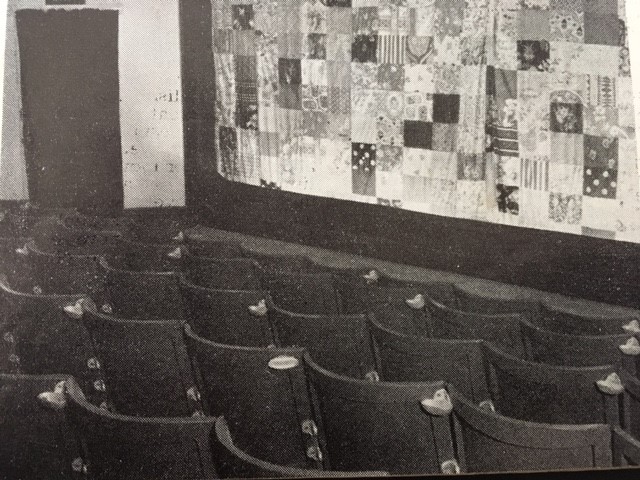
The top floor was also repainted throughout; as the ceilings were high, the decision was taken to paint them ‘Caribbean Blue’, which was carried through on the backs of the seats and the front of the stage. The walls were painted mushroom pink and a lighter blue was used on the entrance walls. Photographs of previous productions – lent by members of the company - were placed all the way up the stairs to the theatre and, just by the entrance to the auditorium, was a signed photograph of the company’s new patron – Vivien Leigh who had sent the photo as confirmation of her patronage.

Due to health and safety restrictions, the theatre was not awarded a public licence so had to operate as a private theatre club, with tickets restricted to members only. Derek Mason describes several attempts by Council Fire Officers to buy tickets to shows in order to see if we were sticking to the rules.
Becoming a private theatre club also benefitted Graham Phillip’s artistic ideals for the theatre; in an interview with the Evening Argus later in 1964 he explained that in being a club “they were not subject to normal censorship regulations and could present plays which the high and mighty Lord Chamberlain would otherwise mutilate”. The artistic plans of the company would be to produce 8 shows a season, and to include one new play and one Shakespeare.
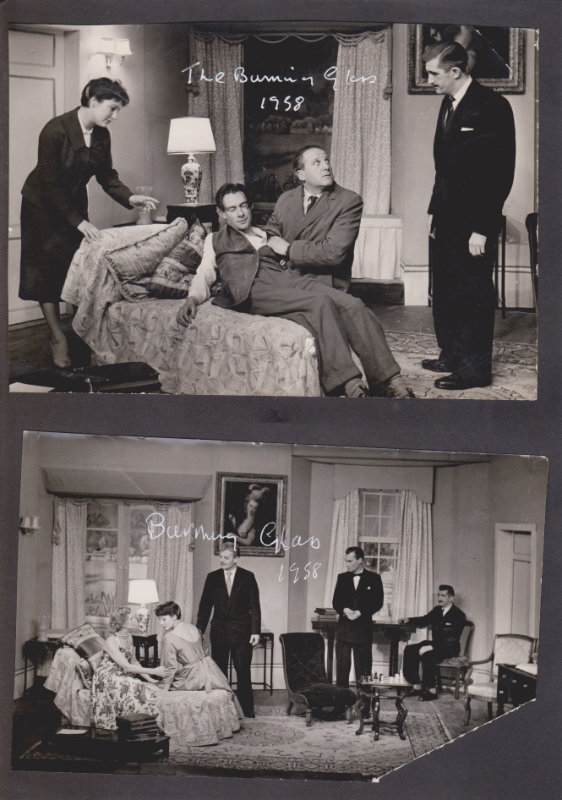
The first production in the brand new ‘New Venture Theatre’ was in November 1958. The play was ‘The Burning Glass’ by Charles Morgan, which was a thriller written in 1954 about a British Scientist who discovers a new method of capturing solar energy.
The fact that Graham Phillips chose a relatively new play for the opening of the theatre, underlines his commitment to producing new writing. In an article in the Brighton and Hove Gazette, Graham was described as being “noted for his experiments, as an introducer of new plays, playwrights and ideas”. In the same article Phillips himself states ‘That the art of the theatre is in the hands of the amateurs” and that he longed “to see a greater experimental trend and more honest hard work in the amateur movement, which would attract the public for its own sake and not because it is a faint carbon copy of West End fare”
Phillips had been a prominent and enthusiastic member of the Sussex Playwrights Club since its creation in 1935 by Charles Walker (who was also one of the founder members of the Southwick Players). Similar to NVT, the club had led a fairly nomadic existence until they were invited by Phillips’ to have a regular monthly meeting at Bedford Place. The Sussex playwrights were encouraged to submit plays for performance, and Phillips would take great pains to either give feedback or help adapt scripts that he thought were worthwhile.
One famous name that emerged from the Sussex Playwrights, and who had a long involvement with NVT was Constance Cox, who was prolific playwright and one of the first female writers to adapt scripts for television. After success in the West End in 1940s, she left her job as a postmistress in Shoreham to become a full-time dramatist, winning awards for her TV adaptations of Jane Eyre and Martin Chuzzlewit and went on to write several episodes of the Forsyte Saga. She had been a member of the Brighton and Hove Rep in the 1940s and 50s and took part in many of the open-air Shakespeare performances.
Graham Phillips was no slouch himself; between 1948 and 1974 he had written 6 plays staged by the company and directed 65 productions plus 4 joint productions. We reached our 100th production in 1964 – the well-known farce Charley’s Aunt by Brandon Thomas. Of the 186 productions mounted by NVT in his lifetime, 36 were ‘new’ plays. As the Argus noted in 1957 , ‘”There has been no greater enthusiast in the amateur world than Mr A Graham Phillips”.
Graham Phillips died suddenly in 1974 at the age of 62. Walter Hix, the well known local theatre critic, who had had a changeable rapport with Phillips over the years, wrote an obituary in the Brighton and Hove Gazette. “Graham’s theatre did not pretend to be an experimental ‘workshop’. It is a theatre where the best of the old and the new is given the best treatment that they can produce. I am sure that his colleagues and associates will think that to keep it that way is the best memorial they can give to their founder-director”.
During the 1970s, our membership totalled in excess of 800 and we reached our 200th play in 1976 - ‘Son of Man’ by Dennis Potter. But while artistically we went from strength to strength, it was the very fabric of the building that gave us cause to worry. When Christ Church suffered an arson attack in 1978 and was subsequently demolished in 1982, NVT was worried about the continuation of their leasehold of the top floor of the building. It was feared that, as the Church no longer existed, that the property would most likely be put up for sale. At that time, the company was in no financial position to buy the freehold of the building but discovered that, due to certain restrictions, the purchase may not be out of the question if they continued to provide a Community resource on the lower floor. This could attract financial help from the council towards the cost of repairs. It is also worth mentioning that NVT itself had suffered a series of arson attacks, 5 in total, that had destroyed costumes and furniture stored there.

The NVT committee and wider membership agreed to take the plunge and in March 1984, NVT successfully secured the freehold of the building from the church commissioners for £12,000. The first major work was to repair the roof in the main house which had sprung major leaks - some seats had had to have been taken off sale as they were placed precariously under holes in the roof) – build new toilets, and to excitingly, start opening up the ground floor to use a foyer and a Studio Theatre.
The first production in the new Studio Theatre took place in May 1986 was a one night review directed by Peter Meekings called the ‘Not the New Venture’s Late Late Christmas Show’ with the first full production being ‘Masterpieces’ by Sarah Daniels (directed by Pat Boxall) in October of that year.

Incidentally, it in the mid 1980s that we finally lost the title of ‘Brighton and Hove Rep’ and become purely the ‘New Venture Theatre’
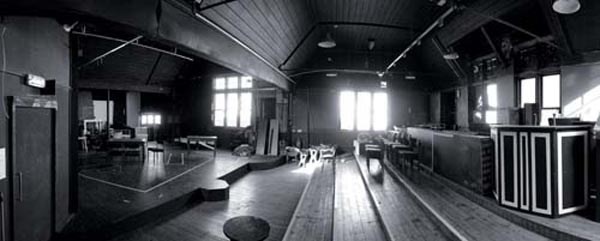
In 2005, NVT hit a new stumbling block when we received the news that a new premises licence meant that we were unable to use the Main Theatre without significant changes. To comply with new regulations, we would need a new fire detection system, widening of access areas, new seating and upgraded electrics. The Main theatre also desperately needed an upgrade of its sound and light systems and redecoration after resolving damp problems. NVT went into fundraising mode again, and while central funds could pay for the new fire detection system, various charity auctions, anonymous donors, and the introduction of ‘NVT Angels’ raised over 17K to start the other much needed work. Funding was also obtained from the Garfield Weston Foundation and the Pebble Trust.
The project to restore the main theatre took 8 years and thousands of man hours. The old proscenium arch was removed, new seats were installed, a new lighting box was built and the tech equipment upgraded, and the theatre painstakingly redecorated throughout.
The grand re-opening of the Main Theatre took place on 19th October 2013, and we also took this opportunity to create a time capsule which was hidden in the theatre which held memorabilia from that season as well as wishes for the future.
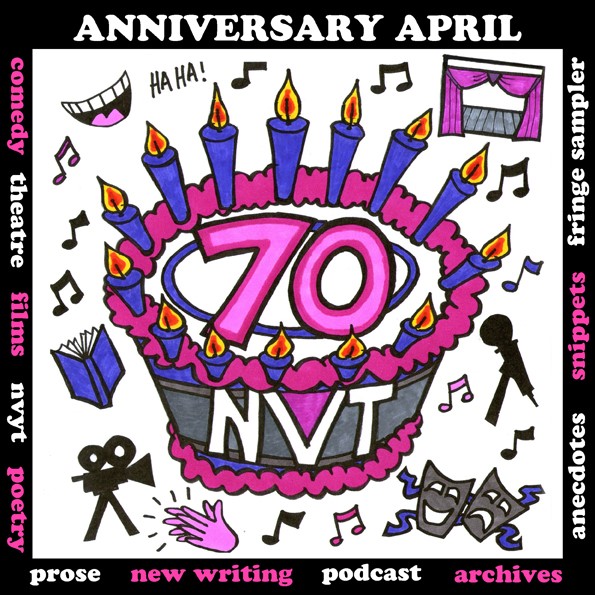
Graham Phillips would have been proud that we are still here today celebrating our 70 year anniversary, and especially in our continuing commitment to producing high quality shows and, in particular, our commitment to new writing with Hotbed, created in the early 2000s to nurture new writing and to our short play festivals today. Introducing new writing to new audiences will always be one of the most important things that New Venture does.
In the commemorative programme that celebrated NVT’s 50th play in in August 1959, Brenda Sandell, then Honorary Secretary , wrote a short piece that I feel is still applicable to the company sixty years on:
“We are but a small band of people very interested in the theatre, and in presenting it to as many people as possible. We feel that despite many other attractions, the theatre has now, and always will have, a place in the community, and something to offer members of that community, which means you and me.
I am but one member of the Company, a cog which helps the wheel turn, but if I have brought you nearer to us I feel I have done a worthwhile job and can so take my place with other members who entertain you and see to your comfort – because you are our first, middle and last thought. You, our audience, our members and our life blood - for what theatre can run without its audience – we cannot.
Many of you I already know, and I hope to know you all so when you come to our theatre you can be welcomed as a member of our circle, and a friend. Remember, our circle would be incomplete without you”.
Alex Epps 2019
